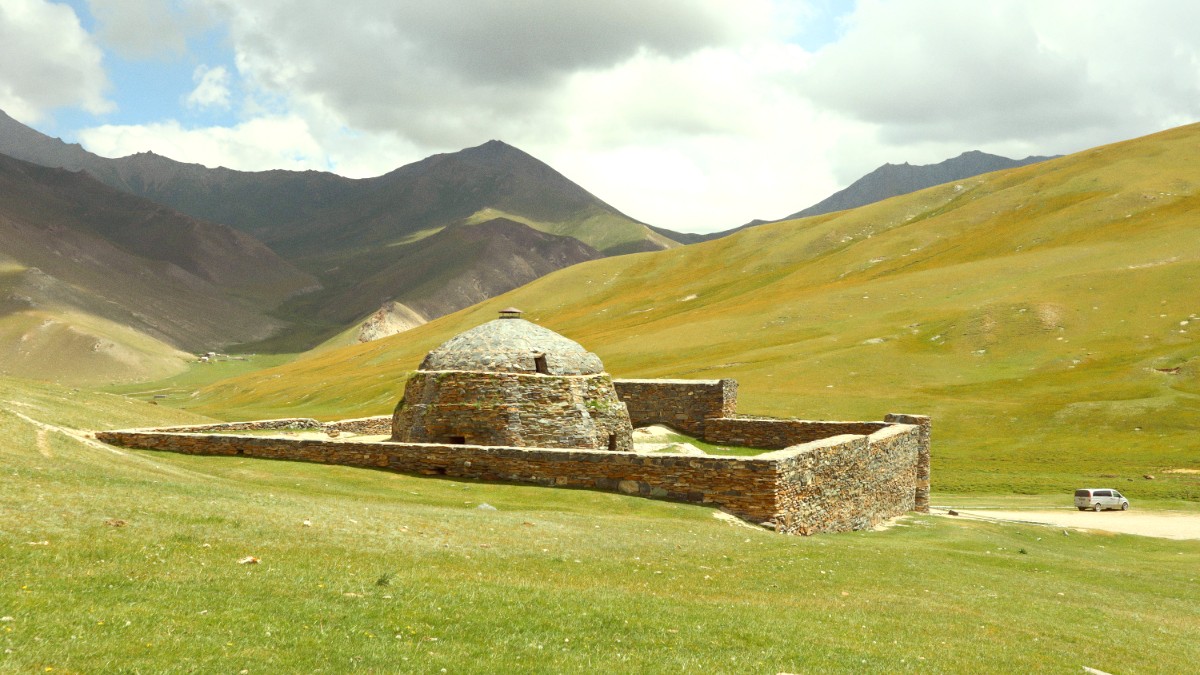
Central Asia
Central Asian cuisine reflects its position at the crossroads of the Silk Road. Nomadic peoples and settled agricultural communities shaped its culinary traditions.
Staple ingredients include lamb, beef, rice, noodles, and various vegetables. Bread, known as Non or Lepyoshka, is central to every meal and holds cultural importance. The cuisine is hearty.
Renowned for its culinary richness. Plov (rice pilaf) is the national dish, with numerous regional types. Shashlik, samsa, and laghman also popular.
More meat-centric, reflecting nomadic heritage. Beshbarmak (boiled meat over wide noodles) is a traditional dish. Kymyz (fermented mare's milk) is a distinctive beverage.
Similar to Uzbek cuisine but with stronger Persian influences. Dishes often feature more dried fruits and nuts. Qurutob (a vegetarian dish) is unique.
The national dish of Uzbekistan. Rice pilaf with lamb or beef, carrots, onions, often chickpeas or raisins. Many regional types.
Find it in dedicated "plov centers" or almost any local restaurant.
Skewered and grilled meat (lamb, beef, chicken) cooked over charcoal. Served in cafes, restaurants, and street food stalls.
A popular choice for dinner or a hearty snack.
Baked savory pastries filled with finely chopped meat (often lamb or pumpkin), onions, and spices. Cooked in a Tandoor (clay oven).
A delicious and popular street food.
Halva (sweet confection of sugar, nuts, butter) and pashmak (cotton candy-like) are popular sweet treats.
Dried apricots, raisins, mulberries, and various nuts are common snacks. Fresh fruits are abundant in autumn.
Available in capitals like Tashkent, Almaty, and Astana. These restaurants feature contemporary Central Asian cuisine and international dishes.
Common in all major cities. They serve a mix of local and some international dishes.
Excellent for quick, inexpensive, and tasty bites. They offer a lively atmosphere and local flavors.
Growing numbers of European, Russian, Turkish, and Asian restaurants in large cities.
Caters to diverse tastes beyond local fare.
From casual pizzerias to more upscale foreign eateries.
Check online reviews for specific restaurant types.
Often light: bread, jam, eggs, porridge, tea.
Main meal of the day, 1 PM - 3 PM.
Lighter than lunch, later in the evening, 7 PM - 9 PM.
Enjoy fresh fruits like apricots, grapes, and melons in season.
Most meat in the region is halal, as the population is predominantly Muslim.
Easily found across the region.
Kosher options are very limited. Find them mainly in small Jewish communities in Bukhara or Tashkent.
Consider packing kosher foods if this is a strict requirement.
Research restaurants in major cities that cater to international tastes.
Offered by local tour operators, specifically in Uzbekistan (Tashkent, Samarkand, Bukhara).
These tours guide you through markets and eateries. Gaining insights into local ingredients and culinary traditions.
Possible in rural areas, notably during fruit harvesting seasons. Experience traditional dairy production.
Guests receive generous food and tea. Meals are often shared from large communal platters.
Elders are served first as a sign of respect.
Bread holds special respect. Avoid placing it upside down or on the floor. Break bread by hand.
Refusing offered tea is generally not polite.
Dine in a traditional Chaikhana for a relaxed, authentic local atmosphere.
Watch a Plov master prepare the national dish in a huge Kazan (cauldron).
Experience a nomadic meal in a yurt, especially in Kyrgyzstan, for a cultural and culinary immersion.
Be open to new tastes and customs.